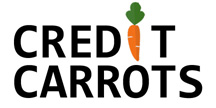Have you ever thought about making the mortgage interest on your house tax-deductible? Depending on your situation, this could save you a lot of money!
In the United States, you’re already able to claim mortgage interest expenses related to roughly $750,000 of debt. In Canada, you’re unable to claim any mortgage interest expense for your residence. As a result, Canadians are more likely than Americans to use this strategy, but it works the same way in both countries.
The Smith Maneuver has proven to be a completely legal tax strategy that effectively makes interest on a residential mortgage fully tax-deductible. However, in order for this strategy to work, you’ll need to have an investment of some kind.
For the purposes of this article, we’re going to assume that this “investment” is a rental property as that’s the most common type for people considering the Smith Maneuver. When using the Smith Maneuver in conjunction with a rental property, it is also known as “cash damming”.
If you’re thinking of using this maneuver to buy risky business investments like stocks, then we urge you to reconsider.
The Smith Maneuver – Mortgage Interest Tax Deduction
The Smith Maneuver allows you to deduct your mortgage interest by essentially moving money from your mortgage debt into investment debt – which are tax deductible. The tax agencies have tried to challenge the validity of the Smith Maneuver in court, and the courts have decided that it is completely legal.
By increasing the amount you can claim for interest deductions, you stand to save money by decreasing your taxable income.
How Does The Smith Maneuver Work?
While the Smith Maneuver is not a complex strategy, it does have a few steps. Before starting the maneuver, you’ll need to make sure you have the following available.
1. A home mortgage that allows prepayments without penalty.
2. A home equity line of credit (HELOC) where the credit limit increases as you pay down your home mortgage.
3. A suitable investment. In this case, we’re using a rental property.
Once you have the necessary prerequisites set up, here are the steps to executing the Smith Maneuver with the rental property example. If you’re not using a rental property, then you basically replace the “tenant” income with whatever income you would like, and replace the “rental property mortgage and expenses” with a investment.
Step 1: Receiving the rent from your tenant. Ideally, you want to receive the rent in the same account that you’ll be using to make the home mortgage prepayment. It’s not a huge deal if it’s a separate account, but it’ll just take an extra transfer.
Step 2: Making a prepayment towards your home mortgage. Use the rent from your tenant to make a prepayment towards your mortgage. The prepayment will go directly towards decreasing your mortgage principal.
Step 3: Using the available credit in your HELOC. The HELOC credit limit will increase by the same amount as your home mortgage prepayment. This frees up money in your HELOC for use towards your rental property.
Step 4: Using your HELOC to pay mortgage and other expenses related to the rental property. Transfer the money out of your HELOC, and use it to pay any expense related to the rental property. This can be things like the mortgage interest (principal does not count), property insurance, condo fees, repairs etc.
Congratulations! You just executed the Smith Maneuver. You can do this as often as you’d like, and slowly but surely you’ll get more and more tax deductions from interest charges related to business investments.
Things To Watch Out For With The Smith Maneuver
1. The interest rate on your home equity line of credit will be higher than your mortgage. If it’s more than 2% higher, then it may not be beneficial to utilize the Smith Maneuver. You or your accountant will have to do an analysis to see if the tax savings you’re getting make the higher interest rate worth it. This is highly dependent on your tax bracket.
2. Since we’re just moving money around, your total debt load remains the same. For every prepayment dollar towards your home mortgage principal, you’re borrowing another dollar under the HELOC to pay for rental property expenses. Some people might not like having a constant debt load.
3. You can use the money from your HELOC towards any business investment. However, using borrowed money to invest in things like stocks are dangerous. If you go down this path, then please make sure you understand the risks.
4. Make sure you keep meticulous records and bank statements on how the money is moving around. If you get audited by the tax authorities, then they’ll need to see this paper trail to confirm that your tax deduction claims are valid. We suggest opening a specific account for the purposes of executing this maneuver so that you can see all of the relevant transactions in one place.
We are not financial advisors, and no content on this site should not be taken as financial advice. No guarantee can be made if you invest based on the information provided on this blog. We make no warranty of any kind regarding the blog and/or any content, data, materials, information, products or services provided on the blog.












Leave a Comment